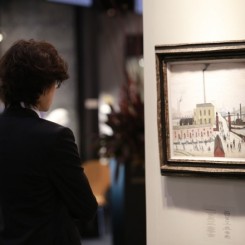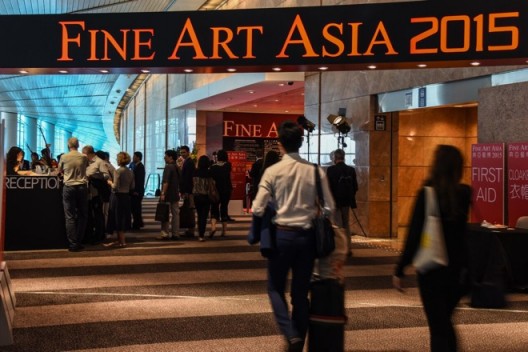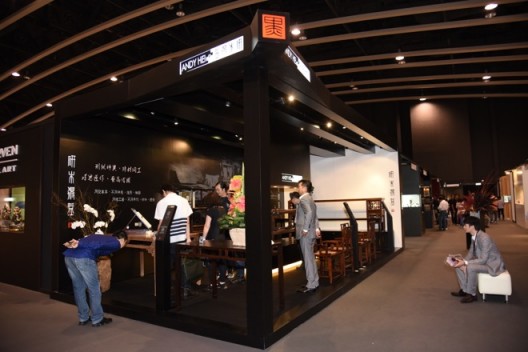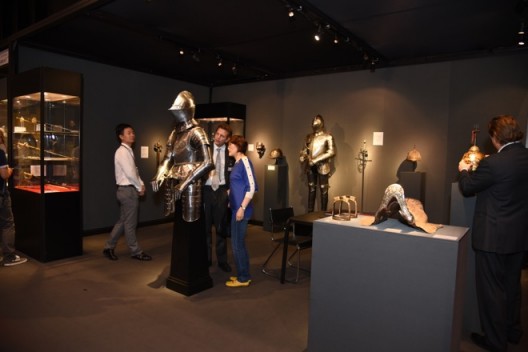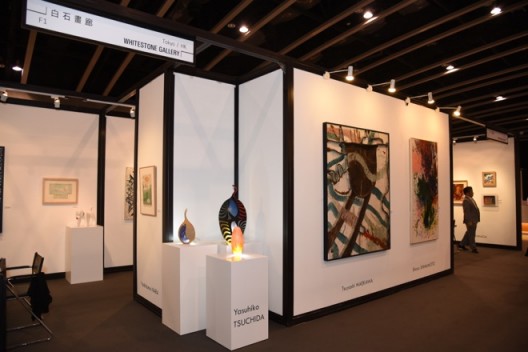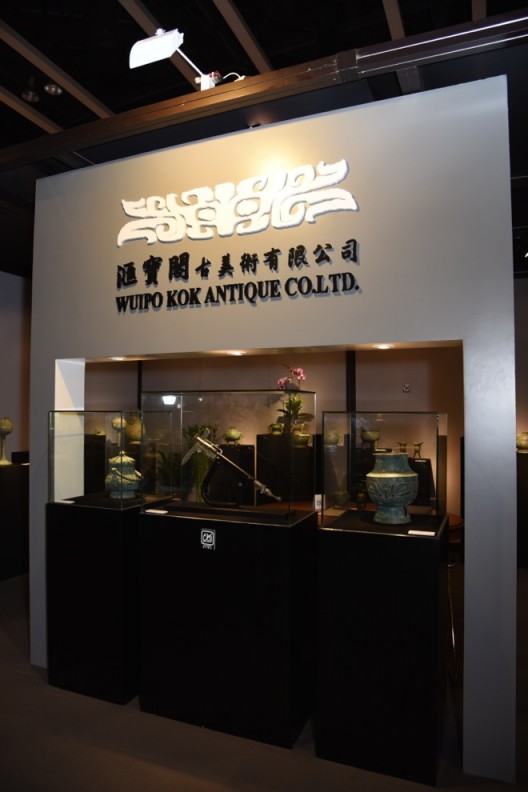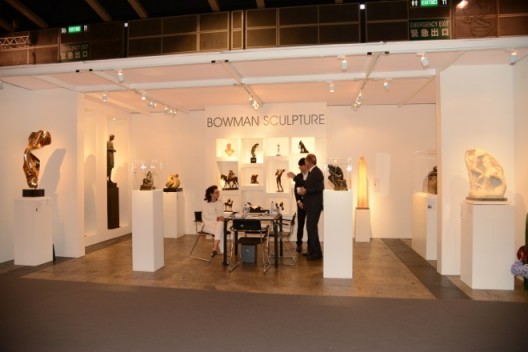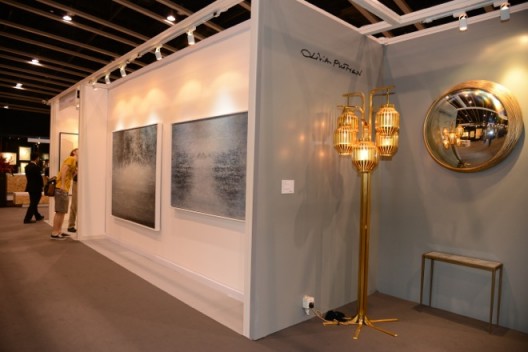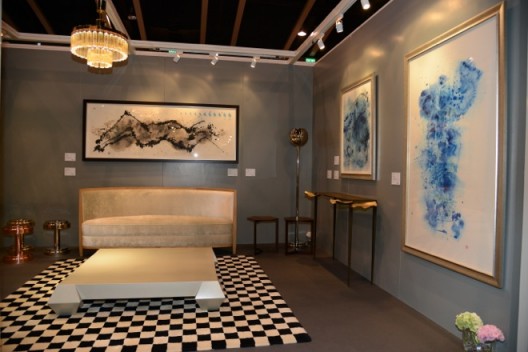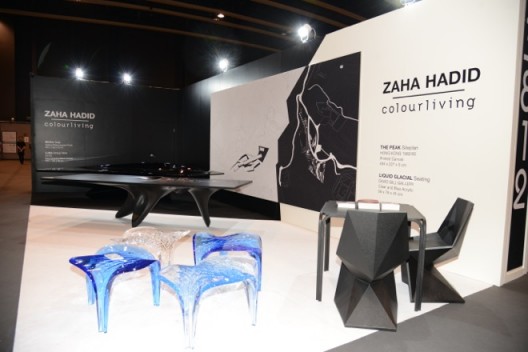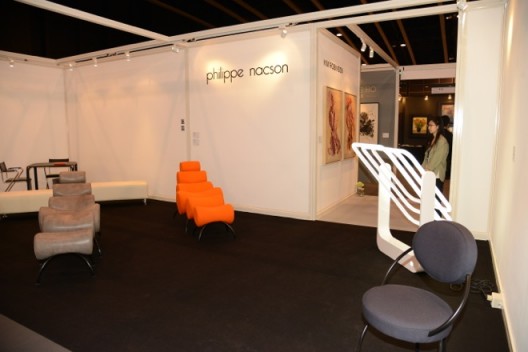The 11th Fine Art Asia was held at the Hong Kong Convention and Exhibition Center from October 4th to the 7th. Over 25,800 collectors, industry professionals, and members of the public attended the fair. More than 100 galleries exhibited over 6,500 pieces, the value of which was estimated to be over 2.8 billion Hong Kong dollars. Auction houses including Sotheby’s, Bonham’s, Christie’s, and Poly also presented their Autumn auction preview exhibitions during the fair.
Calvin Hui, who has been the Co-Chairman and Director of Fine Art Asia since 2011 says, “Fine Art Asia gets its vitality from the fusion of the ancient and the modern, as well as Chinese and foreign elements. A variety of art is presented organically to the viewer, so that there is a surprise around each corner. Fine Art Asia has also remained committed to ensuring the quality of each piece in the exhibition.”
This year, galleries, art fairs, and auction houses alike showed passion for Japanese art by the Gutai Group. De Sarthe Gallery held a Gutai exhibition, while the Sotheby’s preview exhibition featured a special exhibition of Gutai art pieces, and Whitestone Gallery exhibited many Gutai pieces during Fine Art Asia. Whitestone gallery’s director stated that 52 collectors traveled from Japan specifically to attend Sotheby’s auction of Gutai art pieces; the gallery is familiar with many of these collectors. As the market became rapidly familiar with the history of the Gutai Group, more and more collectors of Gutai art pieces are appearing in Hong Kong, Mainland China and Taiwan. This art group once experimented with the involvement of the body, movement, and performance in the canvas and painting process, and though the group no longer exists, individual artists continue to engage in in-depth exploration in unique and distinctive ways, each forming a unique artistic style of their own.
Another of the more popular exhibits at the fair was run by Peter Finer, a London-based antique weapons merchant. Redmond Finer, the founder’s son, gave an introduction of their exhibition: “This is our first time at Fine Art Asia, and we’ve really felt the great passion of the collectors and visitors to this fair. This year we presented swords from Spain, Japanese jiari, Italian daggers, German armor, Mongolian saddles, and many other rare ancient weapons. Each piece we showed features remarkable decorative details, such as an ornamental sabre detailed in the distinctive mannerist style.”
There was no shortage of “regulars” with regards to modern and contemporary artists like Yayoi Kusama and Yoshitomo Nara. However, we also unexpectedly saw oil paintings from Chen Yifei’s younger brother, Cheng Yiming, brought to the fair by Galerie Domonteil, which has been operating for nearly two decades. New ink painting remained the darling of the art market, and a focus for many collectors. Lulu Ngie’s minimalist ink paintings hosted by Gallery EXIT caught the eye of many visitors, while “Temptation of Nature—Installation Art Project”, curated by Eric Leung, was relegated to a humble corner of the fair, perhaps due to the bland and uninteresting works on show. Worth mentioning are the booths run by the fair’s two organizers. Calvin Hui’s Gallery 3812 sold several contemporary ink paintings and designs, while Andy Hei’s booth presented furniture from the Ming Dynasty and was also popular with collectors.
Stepping into the exhibition hall was to enter a living tapestry. The fair featured a wide variety of pieces, which the visitors viewed while moving rapidly from booth to booth. Overall, the quality of pieces on display was high. Though it was difficult to distinguish the boundaries between antiques, oil paintings, contemporary art, and many other exhibition zones, the intermingling of form and category did have the benefit of attracting and holding attention. Compared to art fairs with a sharp focus on antique furniture or art, Fine Art Asia’s rich tableau and variety seemed to hold the attention of its audience more effectively. Of course, it was also the limit placed on the number of each type of exhibitor allowed at the fair that made it difficult for visitors to evaluate and compare the quality and price of items on sale unless they were experts.
This year’s fair is also the 10th anniversary of Fine Art Asia’s organizer, Art & Antique International Fair Ltd (AAIF). In my interview with the organizers, I discovered that Fine Art Asia was once a focused art fair as well. AAIF’s founder Andy Hei is a second generation member who followed his father to Hong Kong; his main enterprise is selling antique Chinese furniture. Since the 80s and 90s, Hei has been visiting and exhibiting at first-rate international art fairs in the US and Europe such as the European Fine Art Fair. After opening a furniture store in Hong Kong, he became intent on expanding the market for collectors. Hei saw organizing an art exhibition as an effective channel for opening up the market, and founded Fine Art Asia in 2005.
Over the last decade, the number of participants has grown from 20-30 merchants to over 100, many of whom exhibit at the fair year after year. Initially, collectors mostly originated from England and the United States, and purchased pieces for investment purposes, but collecting activities have shown a much more diverse market distribution in recent years. Visitors from China, Hong Kong, Singapore, Japan, Korea, and other Asia-Pacific regions comprise a greater percentage of collectors who attend the fair. Their purchasing power is backed by the “New Money” generation who have shown their influence since 2000. Many of these individuals come from IT and finance backgrounds, and have begun to visit auction houses en masse, showing a marked interest in antiques. As times change, the focus of collection also begins to shift. As a trading platform for fine art, the content showcased at Fine Art Asia has also begun to diversify, encompassing everything from bronzes, ceramics, jade, furniture, books, maps, tableware, silverware, furnishings and other antiques to oil painting, sculpture, installation, ink art, contemporary, design, and floral design, along with this year’s debut of antique weapons.
According to Fine Art Asia’s official press release, Rodin’s “The Thinker”, presented by Bowman Sculpture, London (HK$21.7 million) drew much attention from the fair’s audience members. London-based antique silverware expert Koopman Rare Art has exhibited at the fair for the last five years. In addition to a number of sales from their selection of silverware, they also sold a set of silver bowls exported from china (1890) for 500,000 RMB to Southeast Asian collector. Located in “the World of Design” exhibition zone, 88 Gallery (Paris/Hong Kong) sold nearly 80 percent of the items in their booth, a gilt bronze mirror designed by Robert Goossens for Chanel was included in the items sold. Overall, sales “exceeded expectations”, making the fair a success.

